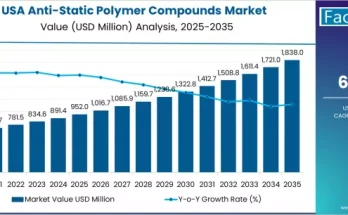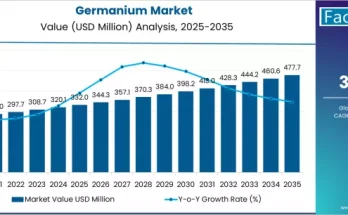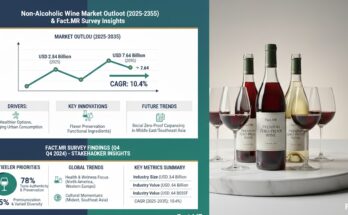The global epithelioma treatment market is projected to grow from $2.5 billion in 2023 to $4.2 billion by 2033, reflecting a compound annual growth rate (CAGR) of 6.8% during the forecast period, according to recent market research. Increasing incidence of non-melanoma skin cancers, advancements in targeted therapies, and rising awareness of early detection are key drivers of this growth.
Epithelioma, including basal cell carcinoma (BCC) and squamous cell carcinoma (SCC), remains one of the most common epithelial cancers. The World Health Organization (WHO) reported 5.4 million new cases of non-melanoma skin cancer globally in 2022, with BCC accounting for approximately 80% of these cases. Epidemiological data indicate that individuals over 50 years old comprise nearly 65% of BCC diagnoses, emphasizing the impact of an aging population on market demand.
Rising Incidence and Unmet Medical Need
Exposure to ultraviolet (UV) radiation is the leading risk factor for epithelioma, contributing to more than 90% of BCC cases in fair-skinned populations. Immunosuppressive therapies and genetic predispositions further increase susceptibility, with immunocompromised patients showing a threefold higher incidence rate compared to the general population.
Developing regions report delayed diagnosis and treatment due to limited awareness and access. For instance, the Global Cancer Observatory (GCO) 2022 data shows that low- and middle-income countries account for nearly 40% of global skin cancer mortality, highlighting a significant market opportunity for early intervention and advanced treatment modalities.
Therapeutic Advancements Driving Market Growth
Surgical interventions, including Mohs micrographic surgery, continue to dominate treatment, representing 45% of total market revenue. However, the pharmacological segment, encompassing Hedgehog pathway inhibitors, immune checkpoint inhibitors, and topical therapies, is expected to grow at a CAGR of 8.2% from 2024–2033.
Clinical trials show that Hedgehog inhibitors achieve response rates exceeding 60% in advanced BCC cases, while PD-1 inhibitors in SCC reduce tumor progression by 40% compared to standard chemotherapy, according to data from the Journal of Clinical Oncology, 2023. Additionally, minimally invasive procedures and combination therapies are expanding adoption in high-risk and elderly populations.
Regional Market Insights
-
North America: Accounted for 38% of global market revenue in 2023, driven by high healthcare expenditure (over $4.3 trillion in total healthcare spending in 2022), advanced treatment infrastructure, and early adoption of targeted therapies.
-
Europe: Represents 28% of the market, supported by government skin cancer screening initiatives and reimbursement coverage for immunotherapies.
-
Asia-Pacific: Expected to grow at a CAGR of 7.5%, fueled by rising awareness campaigns, expanding healthcare infrastructure, and increasing skin cancer incidence (e.g., China reported a 12% year-on-year increase in non-melanoma skin cancers from 2020–2022).
-
Latin America & Middle East & Africa: Collectively account for 14% of the market, with growth driven by improving access to dermatology clinics and government cancer programs.
Market Segmentation
-
By Treatment Type: Surgical therapies (45% market share), pharmacological treatments (38% market share), and radiation therapy (17% market share).
-
By End-User: Hospitals and cancer centers dominate with 60% of total revenue, followed by outpatient clinics (25%) and specialty centers (15%).
Investment Trends
Global investment in biologics and immunotherapies is projected to reach $1.2 billion by 2026, reflecting growing investor confidence. Mergers, acquisitions, and partnerships are intensifying, particularly in North America and Europe, as companies focus on expanding R&D pipelines for targeted epithelioma therapies.
Additionally, digital diagnostics and AI-powered screening tools are gaining traction. A 2023 study in Dermatology AI reported that AI-assisted diagnosis improved early detection rates by 35%, demonstrating potential to reduce morbidity and improve treatment outcomes.
Outlook and Market Opportunities
The global epithelioma treatment market is positioned for sustainable growth, driven by:
-
Rising global incidence of non-melanoma skin cancers.
-
Increased adoption of targeted and combination therapies.
-
Expanding healthcare access in emerging economies.
-
Strategic investments in biologics, immunotherapies, and digital diagnostics.
Dr. Emily Carter, Senior Analyst at Global Oncology Insights, stated, “Data clearly shows that precision medicine and early detection are reshaping the epithelioma treatment landscape. Stakeholders investing in advanced therapies and AI-driven solutions are likely to see significant returns while improving patient outcomes globally.
https://www.factmr.com/report/epithelioma-treatment-market
To access the complete data tables and in-depth insights, request a Discount On The Report here: https://www.factmr.com/connectus/sample?flag=S&rep_id=11957
“



